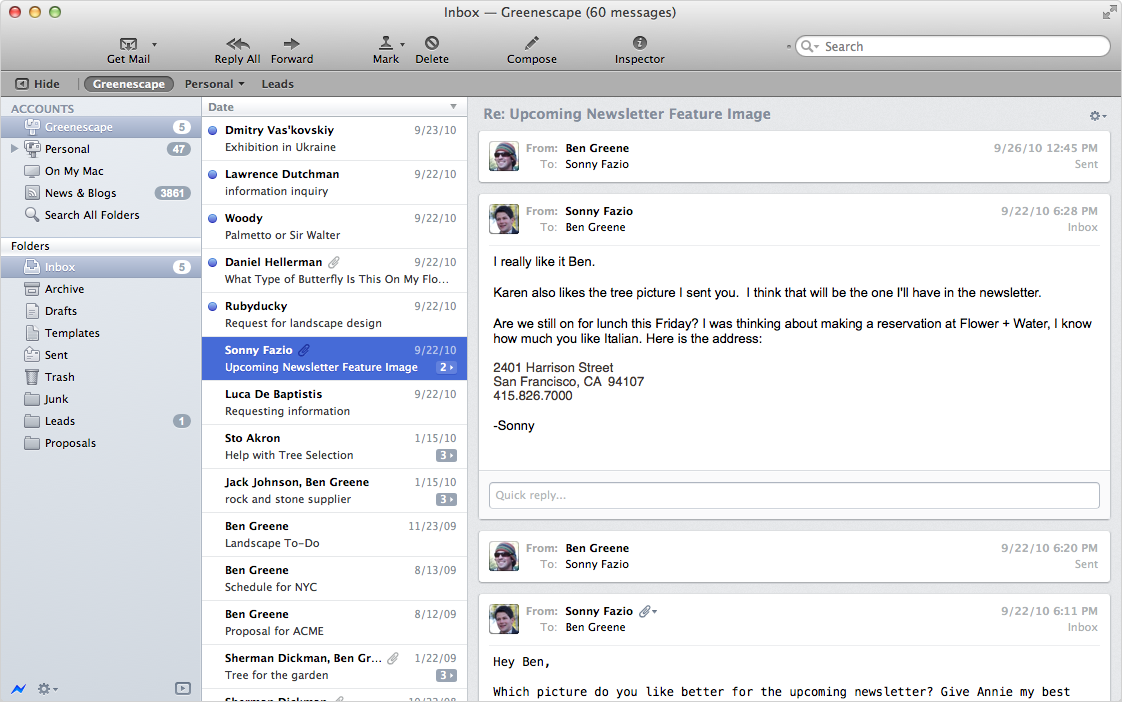Smime Mail App Mac
Mail User Guide
With everything going on, is there going to be a 365 OWA S/MIME control for Edge on Mac OS? Unfortunately there is only one for the Windows version of Edge and not the Mac OS version. The files are an.MSI file (Windows application install) for the Chrome extension and an.appxbundle file (Microsoft Store application install). Installing the S/MIME Certificate on your Apple Mac Using S/MIME Client Certificates with Apple Mail and Outlook for OS X. You can use Client Certificates, also called 'S/MIME Certs' or 'Personal Certificates', with most e-mail clients to digitally sign or encrypt e-mail. When you receive your certificate from InCommon, it will be encrypted in the PKCS 12 format (.p12 or.pfx), using the PIN. A digital signature on an e-mail message helps the recipient verify that you are the authentic sender and not an impostor. To use digital signatures, both the send and recipient must have a mail application that supports the S/MIME standard. Outlook supports the S/MIME standard. Outlook supports two encryption options. Installing the S/MIME Certificate on your Apple Mac Using S/MIME Client Certificates with Apple Mail and Outlook for OS X. You can use Client Certificates, also called 'S/MIME Certs' or 'Personal Certificates', with most e-mail clients to digitally sign or encrypt e-mail.
Email messages that are digitally signed or encrypted can offer enhanced security when sending or receiving email.
Send digitally signed and encrypted emails
A digitally signed message lets your recipients verify your identity as the sender; an encrypted message offers an even higher level of security. To send signed messages, you must have a personal certificate in your keychain. To send encrypted messages, the recipient’s certificate must be in your keychain.
In the Mail app on your Mac, choose File > New Message.
Move the pointer over the From field, click the pop-up menu that appears, then choose the account for which you have a personal certificate in your keychain. Github mac app crashes.
A Signed icon (containing a checkmark) in the message header indicates the message will be signed when you send it.
Address the message to recipients.
An Encrypt (closed lock) icon appears next to the Signed icon if your keychain contains a personal certificate for every recipient; the icon indicates the message will be encrypted when you send it.
If you don’t have a certificate for every recipient, you must send your message unencrypted. Click the Encrypt icon to replace the closed lock icon with an open lock icon. Extract rar app mac.
Some mailing lists reject digitally signed messages because the signature is treated as an attachment. To send the message unsigned, click the Signed icon in your message; an x replaces the checkmark.
Note: If for some reason your certificate isn’t associated with your email address, or if you want to use your certificate with a different email address, Control-click the certificate in Keychain Access, choose New Identity Preference, and provide the requested information.
Receive digitally signed and encrypted emails
In the Mail app on your Mac, a Security field in the header area indicates whether a message is signed or encrypted.
A signed icon (a checkmark) appears in the header area of a signed message. To view the certificate details, click the icon.
If the message was altered after it was signed, Mail displays a warning that it can’t verify the message signature.
A lock icon appears in the header area of an encrypted message. If you have your private key in your keychain, the message is decrypted for viewing. Otherwise, Mail indicates it can’t decrypt the message. See If Mail can’t decrypt emails.
If you want to include encrypted messages when you search for messages in Mail, set the option in the General pane of Mail preferences. The option enables Mail to search individual words, even though the message is stored encrypted.
